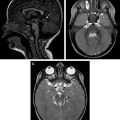
Imaging genetics has rapidly developed into a promising, high-impact research field and extended into a body of studies on cerebral disorders, including both neurologic and psychiatric studies. In this context, brain imaging measures sit in the pathway that connects genetic factors to brain illnesses.
Imaging genetics is an emerging field aimed at identifying and characterizing genetic variants that influence measures derived from anatomical or functional brain images, which are in turn related to brain-related illnesses. This new imaging approach combines genetic information and neuroimaging data in the same subjects to discover neural mechanisms linked to numerous disorders.
An increasing number of studies have shown the overall strength of imaging genetics and its impact on facilitating an understanding of the genetic underpinnings of various neurologic disorders and an improvement in early diagnosis and treatment. Noninvasive brain imaging techniques provide much more objective and reproducible phenotypes and can accommodate highly heterogeneous symptoms expressed by patients classified into the same diagnostic group.
Although standard imaging or genetic methods are well established and have many successful applications, merging the two fields is not straightforward. The overwhelming growth of this new imaging concept provides abundant promising results but also reveals challenges embedded within study designs. Another big challenge faced by both radiologists and geneticists is how to properly analyze the large amount of collected data. Although methods reviewed here attempt to tackle this complex problem, limitations are clear. The success of individual studies and the continuing growth of imaging genetics depend on the availability of imaging genetic analytic tools and their proper implementation. Further developing current methods and integrating more information relevant to imaging genetics will continue to be an important research frontier. It is very promising to see that some studies have taken steps in this direction.
Given that the future focus of imaging genetics is expected to ultimately help in understanding various neurologic disorders and turning basic science into clinical strategies, we believe that more effort should be focused on the development of methods that can confront these challenges.
In this issue, we focus on some neurologic conditions in which imaging genetics may play an important role in daily practice and, more specifically, in clinical approaches. The issue starts with an overview of analysis of genetics and brain imaging, trying to build a bridge between the two. The next article surveys the methods and organizes them according to their multivariate nature on specific clinic conditions, such as demyelinating diseases, vascular diseases, neoplasm, psychiatric and pediatric disorders, as well as dementia. Given detailed reviews of imaging data available, we provide a brief summary that includes a recently proposed method of analysis.
I hope the readers find these articles informative, entertaining, provocative, and helpful in their practice. I wish to express my sincere gratitude to all the contributors, who range from established experts to rising stars in the field, allowing this project to become a reality. I really appreciate all their efforts immensely.
I do not have words to express my thankfulness to Suresh Mukherji, MD, Consulting Editor, for the privilege of being chosen and for placing his trust in me to lead this important project. Thanks also must be given to the series editors, Donald Mumford and John Vassallo, for guidance, patience, and encouraging support through the process of preparation of this issue.
Last, and by no means least, I want to dedicate this conquest to my son, Bruno, and to my wife, Simone, for their support, love, and understanding during the process of preparing this work. And to my parents, Leonice and Luiz Celso, for their encouragement and enormous contribution to my career.
Stay updated, free articles. Join our Telegram channel

Full access? Get Clinical Tree




